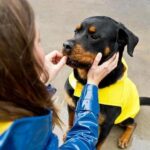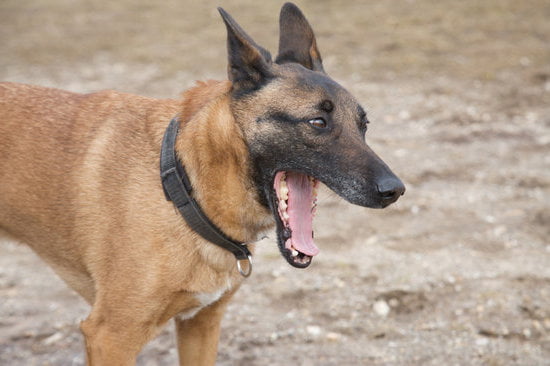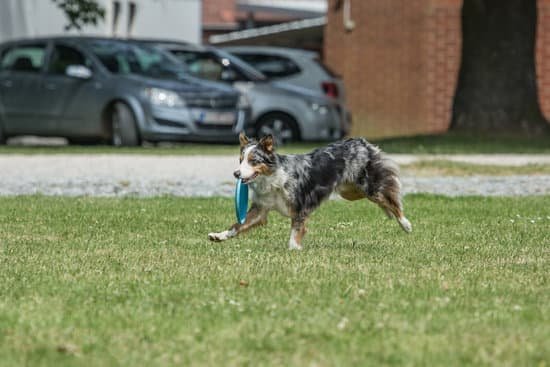Introduce Alternative Treatments
Teaching Commands – Create a strategy for teaching the dog commands such as “leave it,” “drop it,” and “stop biting.” Make sure to use positive reinforcement when the dog obeys these commands. Rewards such as food or verbal praise can help reinforce desired behaviors.
Redirect Chewing Habits – If your dog is an avid chewer, redirect their chewing activity to toys and chew bones. This will help prevent them from biting while they are eating.
Provide Regular Exercise – Exercise is essential for a healthy, happy pup. Regular exercise helps burn off excess energy and can make them less likely to engage in destructive behaviors like biting while eating. Make sure to set aside adequate time for daily walks and playtime with your dog so they stay physically active.
Distract From Eating – Determine what is triggering your pet’s desire to bite while eating and distract them away from that trigger by focusing on other opportunities for engagement such as playing or providing chew toys or treats instead. This will give your pup something different to focus their attention on rather than food-related activities that could lead to biting behavior.
Offer Rewards
Rewards are an effective way to reinforce good behavior. When training a dog not to bite while eating, food offers the best reward. Choose small treats made specifically for dogs, as human food may be unhealthy for a pup’s digestive system. Provide the treat every time the dog goes for his meal without biting or in response to commands such as sit. Make sure to give the reward quickly so that he associates it with the desired behavior; this will encourage him to repeat it next time. Additionally, owners should lavish praise whenever appropriate, telling their pooch what a good boy or girl he is being and giving lots of loving petting and hugs. Offering rewards helps show a dog that behaving appropriately has its own rewards, making them more eager to respond positively than if they weren’t given any indication that they were doing something right.
Address Different Dog Breeds
Different dog breeds may respond differently to training when it comes to biting while eating. Techniques that work for certain dogs may not be effective for some other breeds. In general, however, all breeds tend to show similar behavioral patterns, so there are a few fundamentals that can help with all of them. Firstly, it is important to determine the root cause of your dog’s biting while eating — is it a resource guarding behavior or just a handsy reaction? Secondly, develop a consistent and repetitive approach in order to teach your pup alternative behaviors. Depending on the breed, you might also want to reward desirable behaviors with treats or verbal praises. In addition, always use positive reinforcement rather than punishment when dealing with unacceptable biting and encourage your pup in times of success. Finally, if required, seek out the advice and assistance of an experienced pet behaviorist or trainer who can provide more valuable information specific to your pup and their breed.
Offer Helpful Resources
One resource for training a dog not to bite while eating includes a book called, “No More Biting: Hand-Feeding Techniques for Dogs,” by Pat Miller. This book is designed to teach people how to communicate with their dogs through hand-feeding techniques. It covers the importance of diet and dietary practices as well as ways to establish clear boundaries during mealtimes. Several different approaches are discussed including tricks and games, food puzzles, and rewards-based systems. Additionally, the book offers advice on redirecting aggressive responses, preventing food addiction and stress related behaviors, and teaching dogs polite mealtime behavior without utilizing punishment or physical force.
Other resources on this topic include web articles such as “Train Your Dog Not To Bite While Eating” from Dog Training Basics and “Preventing Resource Guarding” from Karen Pryor Clicker Training. These articles offer advice on slowing down meals so biting can be prevented by making sure dogs don’t become too hungry before being fed; desensitizing your dog to interaction around his food bowl; teaching calm behavior around food; and doing counterconditioning exercises when your dog gets defensive about his meal if he is already exhibiting bites or snarls when someone nears his food bowl.

Welcome to the blog! I am a professional dog trainer and have been working with dogs for many years. In this blog, I will be discussing various topics related to dog training, including tips, tricks, and advice. I hope you find this information helpful and informative. Thanks for reading!





